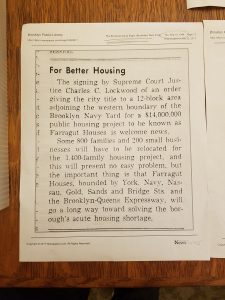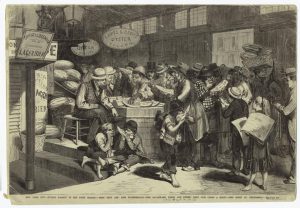Site visit reflection blog post / Orlando J Ramos
Looking ahead to Wikipedia week: April 24 and 26
Today we took part in the library/NYPIRG Earth Day screen print and button making session, and then returned to the classroom to review the Wikipedia assignment guidelines and the final project guidelines.
For Monday, please review the Wikipedia assignment guidelines, begin to think about the article(s) you might improve through editing, writing, or creating references, and the photos or media you will contribute to the Wikimedia Commons.
Also be prepared to discuss the 3 short assigned readings:
Lih, Andrew. “Can Wikipedia Survive?” The New York Times. 20 June 2015. Web.
Postrel, Virigina. “Who Killed Wikipedia?” Pacific Standard. 17 Nov. 2014. Web.
Randall, Eric. “How A Racoon Became an Aardvark.” The New Yorker. 20 July 2014. Web.
On Wednesday, April 26 our guest lecturers, Prof. Ann Matsuuchi from LaGuardia Community College and Richard Knipel, president of the Wikimedia NYC Chapter, will lead us in a Wikipedia workshop. We’ll make use of the tablets; it’s fine to bring your own laptop if you like.
Welcome back! And this Thursday 4/20 runs on a Monday schedule
Today we viewed The Happy City Experiment and discussed the spirit of a place. Groups also worked on their outlines. Don’t forget! Tomorrow, Thursday, April 20, the college runs on a Monday schedule. We’ll spend some time reviewing the assignment guidelines for the Wikipedia assignment, which you’ll complete both individually and in your research groups.
Next week we dive deep into Wikipedia, with a writing and editing workshop on Wednesday 4/26, facilitated by Prof. Ann Matsuuchi, Instructional Technology & Systems Librarian at LaGuardia Community College. Please get started on three readings for Monday:
Lih, Andrew. “Can Wikipedia Survive?” The New York Times. 20 June 2015. Web.
Postrel, Virigina. “Who Killed Wikipedia?” Pacific Standard. 17 Nov. 2014. Web.
Randall, Eric. “How A Racoon Became an Aardvark.” The New Yorker. 20 July 2014. Web.
Annotated Bibliography – Farragut Houses
vinegar hill group annotated bibliography
Preservation & Development | Annotated Bibliography
Annotated Bibliography – Navy Yard Group
Aya Morsy Blog #2
I found this article talking about making better housing for low income families on Sept 19, 1946. The city was proposing public housing (Farragut Houses) to solve the housing shortage. They proposed housing for 1,400 families which was great but it still had a negative side to it. The negativity was that 800 families and 200 small business had to relocate because of it. Even though the city was trying to solve the problem of housing shortage but they gave a bigger problem to the people that were already there. I am wondering if that’s the reason why Vinegar Hill downgraded. Maybe the Farragut Houses are the reasons people left. Or even the reason why Vinegar Hill isn’t developing. I understand that it helped low income families but at the same time it hurt that people that were residing and working there. I wonder if other neighborhood went through the same problems.
Armend Sela BLOG #2
https://digitalcollections.nypl.org/items/510d47e0-d816-a3d9-e040-e00a18064a99
I chose this picture for this blog because it clearly depicts a mass of people walking in a market district. This picture will help us fortify our hypothesis, which is that the opening of Wegmans Market will increase the amount of people entering the Navy yard form Vinegar Hill, thus strengthening the relationship. You can see people eating a type of fruit in the picture, and many people passing by. These markets are crucial for a positive development in a community. It creates a boom in the economical market, creating jobs and selling more items. As of today, residents in Vinegar Hill must walk 2 miles to be able to buy fresh produce, So an opening of this market will be convenient for the residents in Vinegar Hill and for people that live around the market.





